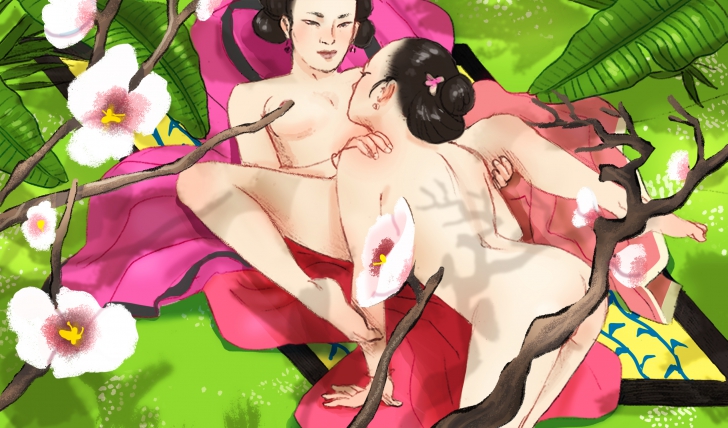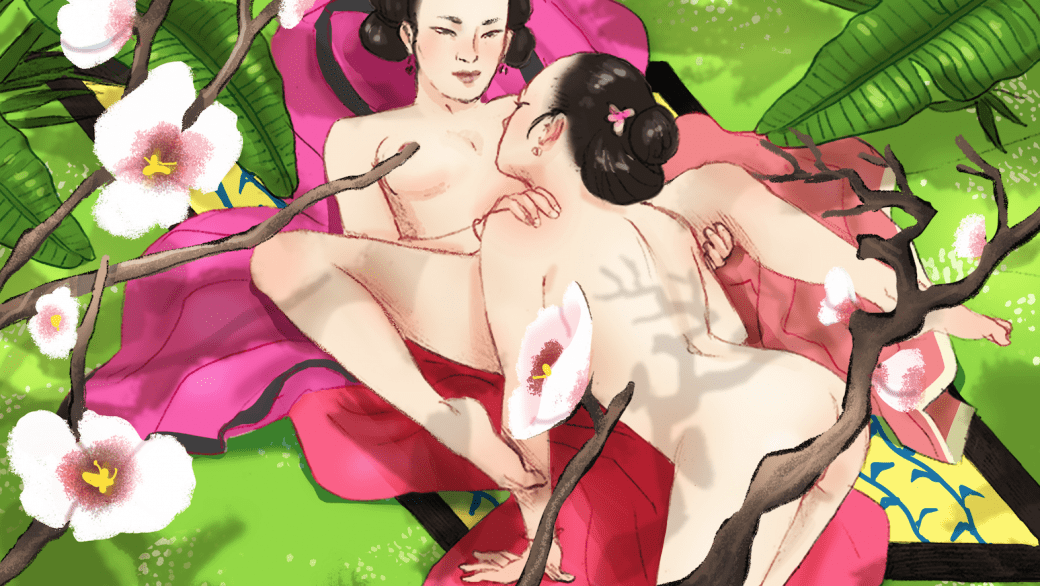I’ve found it; after years of study I’ve found the pinnacle of homosexual civilizations, the most flagrantly, consistently same-sex loving people in recorded history. Growing out of the Xia dynasty, from 16th century BC on, the land of warring kingdoms and ever-shifting empires that would go on to become China printed the names of royal male sexual favourites alongside those of emperors and princes. Traditions of lowly royal favourites raised from the rabble, male Chinese actor-prostitutes, scholarly lovers and bureaucratic beaus flourished throughout the Zhou, Han, Yuan and Ming dynasties — a stretch of time that takes us right into the 17th century.
For millenniums, China was the height of civilization not at all bothered by people that were rather tolerant of same-sex couples. As long as a man was able to perform his duties and produce an heir, he was quite free to pursue same-sex relationships, and sometimes even to bring his lover into the family in some capacity. There’s no shortage of stories, fictional or biographical, comedic or tragic, royal and refined, raunchy and racy, that depict centuries of male same-sex romance, but what of women? If Chinese men had been boinking each other from before history was recorded, women must have found their way into each other’s beds occasionally, though references are sparse.

Same-sex love between women was just as widespread as men, but historian James Neill explains that, like other societies throughout history, literature was produced by men and for men, so anything that didn’t revolve around a penis didn’t get put to paper. During the Han period — at the mid-second century of the common era — historian Ying Shao observed one practice among women in the emperor’s household: “When palace women attach themselves as husband and wife it is called dui shi. They are intensely jealous of each other.” It may be conjecture, but one translation I found on a Mandarin Chinese dictionary translates dui shi as “to look face to face” — an observation of the kind of sex they had, perhaps? Neill explains that if there was a term for it, it was probably a pretty common occurrence, and other writings in Records of the Han point out relationships between women, from slaves to servants of the empress.
Written word flourished among the middle class leading into the Ming dynasty, which lasted between 1368 into the 17th century, so stories became more diverse, including significant uptick in explorations of female sexuality; although the stories still managed to revolve around dick. In Pitying the Fragrant Companion by Ming-era author Li Yu, a young, unmarried woman is beloved by an older, married one. The older woman prays to be transformed into a man so they can be together, which does not happen, so she dresses as a man instead. They’re separated again, so the older woman begs her husband to bring the younger woman into the household as a concubine, and they have a threesome.
The threesome speaking to female desire is genuine, as Chinese sexuality in men and women typically ran ambisexual or bisexual, as opposed to strictly homo or heterosexual. Another description from a Ming-era work illustrates this further: “Lady precious Yin and Mistress White Jade lay on top of each other, their legs entwined so that their jade gates pressed together. They then moved in a rubbing and jerking fashion against each other like fishes gobbling flies or water plants from the surface.” It’s not a good piece of classic Chinese writing if there aren’t about ten nature similes per sentence. The piece inevitably goes on to describe how Great Lord Yang lined things up perfectly and thrust his “jade root” in between them until they all “shared the ultimate simultaneously.”
There were, of course, couplings where men weren’t involved. Same-sex marriage was noted among both men and women, especially in certain regions of China. “Golden Orchid Associations” were especially common in Guangdong province, the region outlying Hong Kong and Macau, where one woman assumed the role of husband, and the other wife. The women would exchange gifts and feast, like any other marriage ceremony, and would then go on to adopt female children who inherited property from their parents. Male same-sex love may have been more consistently celebrated and recorded, but female homosexuality in China grew as strong as a tuft of vibrant hydrangeas caressed by the tender wind.
(History Boys appears on Daily Xtra on the first and third Tuesday of every month.
You can also follow them on Facebook)
(Original illustration by Stephen McDermott)


 Why you can trust Xtra
Why you can trust Xtra


